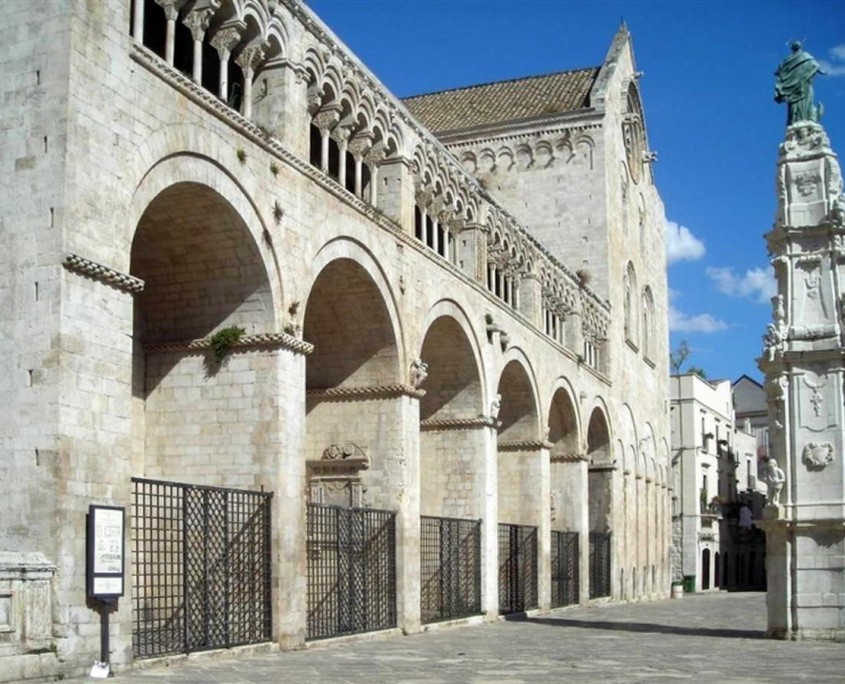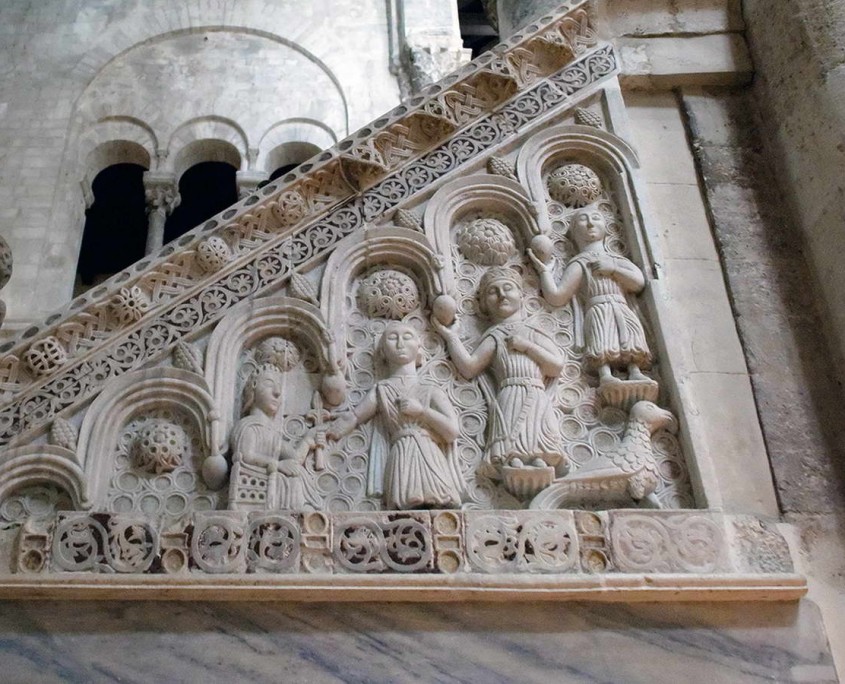This ancient stone, as relevant today as ever, is one of the varieties of marble and stone from Puglia – limestone to be found throughout the area – giving the region a position of prestige in the national and international stone market. The special geo-morphological, physical-mechanical properties of Trani Stone, combined with a pleasing variety of soft ivory and pearl tones, brought about its widespread use since ancient times. The Trani area, which has a subsoil rich in limestone, has seen extraordinary entrepreneurial activity and industrial development with the spread of many companies, specializing in extraction and processing, becoming an asset for the whole area and contributing to its enhancement. In the ’90s, great contemporary architecture and design discovered the value and potential of stone from Puglia and highlighted its quality, versatility and diverse applications, both in construction, modern architecture and interior design, attributing a new aesthetic to them that goes beyond territorial boundaries and opening itself to new and more advanced methods of application. Thanks to the unique physical and mechanical properties of its texture and consistency, its color brilliance and long-lasting polish, besides being extremely easy to process, Trani Stone is used successfully by architects and interior designers for high-end projects both in structural as well as decorative and aesthetic work.
Features Consistent
Compact – Ductile – Waterproof – Freeze-Thaw Resistant – Slip Resistant – High longevity – Excellent color brilliance – Soft, neutral and homogeneous tones – Long-lasting Polish
Exterior Use
It is widely used in civil construction and complex architectural constructions with a structural or ornamental function. It is used for residential and street furnishing in walkways, driveways and garden paths, stone walls, fountains, pavements/sidewalks and pedestrian footpaths, swimming pools, rustic flagstones, cycle and bike lanes, etc. It has an excellent ability to withstand and adapt to temperatures in hot climate zones, thanks to its high resistance to weathering and thermal change.
Interior Use
Trani Stone is widely used in interiors for the realization of architectural elements and features such as columns, capitals , jambs, doorsteps, stairs, cornices, shelves, arches, classic and contemporary design fireplaces. This stone is prized for its longevity and is particularly suitable for residential flooring and road paving in heavily travelled areas, as well as internal and external walls .
Some examples of architectural works using Trani Stone:
St. Nicholas Cathedral, Trani – Trani Synagogue – Church of Nazareth, Barletta – Saint Barbara Cathedral, Bitonto – Bologna University of Chemistry and Biology – Imperia Post Office Building – Puglia Regional Office in Brussels – State Property Building and War Memorial, Taranto – Pescara Post Office Building – Messina Railway Station – Foggia Post Office Building – work in the major branches of the Bank of Italy and Banca Nazionale del Lavoro and many other important work in public and private buildings in Rome and major European capitals such as London, Berlin, Paris, etc.



